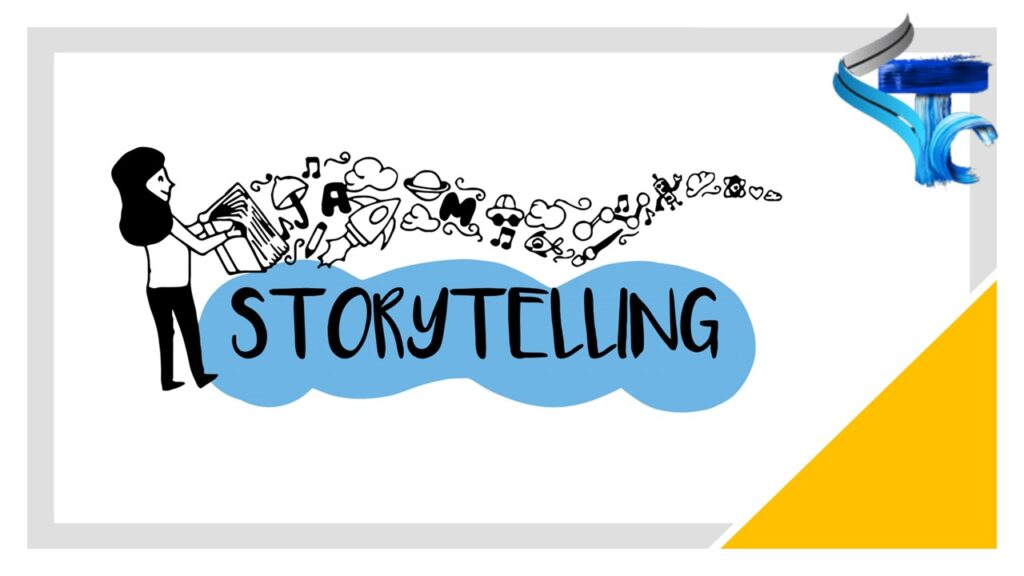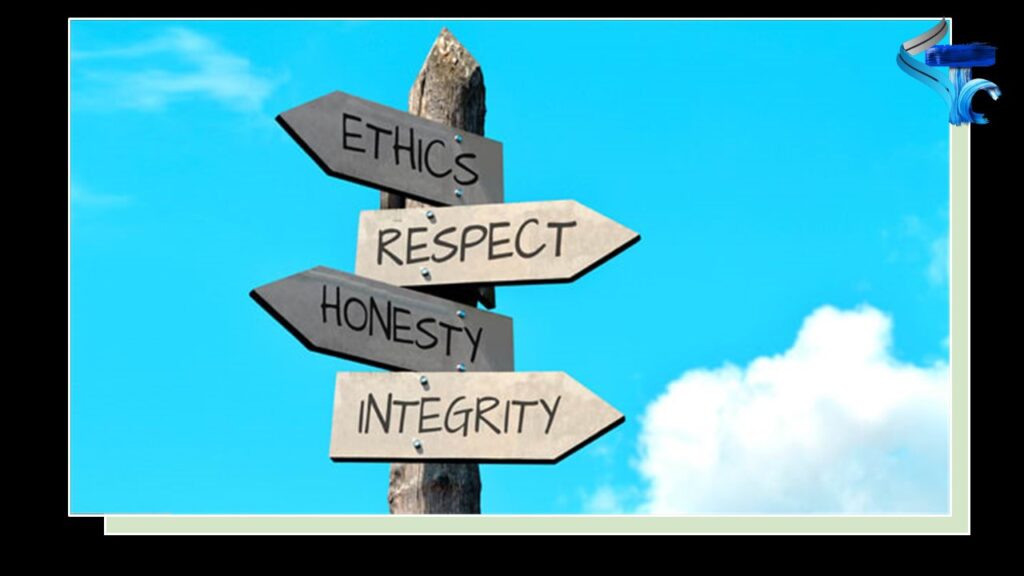Effective communication and engagement are key in today’s fast-moving business world. Storytelling is a potent tool that may revolutionize corporate training and have a lasting impact.
Corporate training’s power of storytelling transcends simple information sharing, delves into the human experience, elicits emotions and enhances learning. The essence of this article is to look at how important storytelling is in corporate training, its significance in leadership development and how storytelling courses can open doors for businesses’ success.
What is StoryTelling?
Storytelling has been part of human culture since time immemorial. It is a timeless art that holds people spellbound and connected at a profound level. As regards corporate training, telling stories becomes a powerful instrument that facilitates effective learning as well as knowledge retention. Through weaving narratives, anecdotes and personal histories into training programs, organizations can establish an immersive learning environment rich with common experiences.

What is Storytelling in Corporate Training?
The art of describing a story or a series of events using words, pictures, or other media is known as storytelling. It is an essential human activity that has been transmitted through the ages for the purpose of exchanging cultural knowledge, customs, and experiences.
Characters, storyline, setting, conflict, and other components all contribute to the power of storytelling and help make an engrossing and captivating tale. Storytelling, whether it be through written or spoken word, visual medium, or digital platforms, captures audiences’ attention, arouses their emotions, and conveys ideas in a potent and lasting way. It is an all-encompassing instrument that cuts through barriers to link people and mold our perception of the outside world.
Benefits of Storytelling in Corporate Training
The power of storytelling in corporate training has the following benefits to mention:
1. Enhancing Engagement and Retention
The potential of narrative to improve engagement and retention of knowledge is one of the main advantages of using it in corporate training. Learners may find traditional training techniques daunting since they frequently rely on dry presentations and information that is heavy on statistics. On the other hand, learning becomes more memorable and relatable when stories are told.
2. Creating Emotional Connections

Stories have a unique way of evoking emotions and connecting with individuals on a personal level. When learners are emotionally engaged, they are more likely to connect with the content and internalize the key messages. Through the power of storytelling, trainers can create a safe and inclusive space where employees feel heard, understood, and motivated to actively participate in their own development.
3. Fostering Collaboration and Empathy
Narratives has a distinct ability to evoke feelings and establish a personal connection with others. Learners are more likely to connect with the material and internalise the main ideas when they are emotionally invested in it. Trainers may establish a secure, welcoming environment where staff members feel heard, understood, and inspired to take an active role in their own growth by utilising the storytelling technique.
4. Sparking Creativity and Innovation
To stay ahead of the curve in today’s cutthroat corporate environment, creativity and innovation are crucial. By inspiring workers to think creatively and explore new ideas, storytelling has the ability to unleash creativity. Through the dissemination of success, failure, and obstacle-overcoming narratives, companies may encourage their employees to adopt a growth mindset and fully realise their creative potential.
Courses on Storytelling: unleashing the power

Organisations might spend money on specialised storytelling courses to fully utilise the power of narrative in corporate training. These courses offer a methodical approach and direction for using storytelling approaches to enhance training curricula. Let’s examine some important facets of corporate storytelling training.
1. Understanding the Elements of a Compelling Story
The first step in any effective business storytelling workshop is to examine the fundamental components of an engaging narrative. The significance of a well-written narrative, which includes components like characters, conflict, resolution, and a clear message, is taught to participants. They learn how to create stories that effectively communicate the intended themes to their audience and strike a chord with them.
2. Building Storytelling Skills
It is possible to learn and improve the craft of storytelling with practice. Courses on storytelling include hands-on activities and constructive criticism to help participants hone their storytelling abilities. Participants gain knowledge about story structure, evocative language, efficient pace, and engaging their audience through participatory exercises. Trainers, leaders, and anybody else looking to communicate information persuasively will find these abilities to be extremely useful.
3. Storytelling for Leadership Development

Effective leadership involves more than just task management; it also involves inspiring, motivating, and influencing people. Because it makes it possible for leaders to successfully communicate their vision, values, and tactics, the Power of Storytelling is essential to the growth of leaders. Leadership storytelling courses concentrate on helping leaders hone their storytelling abilities so they can motivate and enthuse their staff, create a feeling of mission, and propel their businesses forward.
4. Integrating Digital Storytelling
Storytelling has changed in the digital age, going beyond conventional forms. Immersion narratives are produced by digital storytelling, which blends interactive elements, movies, and multimedia components. The use of digital tools and platforms to improve the power of storytelling experience is covered in courses on the power of storytelling for business. Participants gain knowledge on how to use technology to produce effective training materials and creatively engage students.
Storytelling Learning: Transforming Organizations
Organisations may unleash the potential of their workforce by embracing the power of storytelling as an effective learning and development tool. Businesses can build a collaborative, innovative, and knowledge-sharing atmosphere by cultivating a storytelling culture. The following are some ways that narrative can change companies:
1. Enhancing Employee Engagement and Satisfaction
Workers are more likely to be dedicated to their companies and productive when they feel appreciated and respected. Power of Storytelling gives workers a forum to express their thoughts, ideas, and experiences, which promotes engagement and a feeling of community. Businesses may foster a welcoming and inclusive work atmosphere that increases employee retention and satisfaction by integrating power of storytelling into their core values.
2. Transmitting Organizational Values and Culture

Successful businesses are built on the foundation of their organisational principles and culture. Organisations may express these principles in a memorable and captivating way by utilising the Power of Storytelling. Leaders may motivate staff members to conform to the intended culture by telling tales that exemplify the company’s guiding values. The Power of Storytelling turns into a potent tool for passing down information, experience, and the spirit of the company to the following generation of workers.
3. Strengthening Leadership and Decision-Making
Organisations need effective leadership to navigate change and uncertainty. The Power of Storytelling enables leaders to engage with their groups and motivates them to take on novel tasks and concepts. Through the sharing of personal accounts of growth, adaptation, and resilience, leaders may inspire their people to take risks and build confidence. Using relevant tales to explain difficult situations makes them more approachable for staff members, which further improves decision-making.
4. Building a Learning Organization
For an organisation to succeed in the quickly changing business landscape, ongoing learning is essential. Power of Storytelling encourages staff members to consider their experiences and draw insightful conclusions, which fosters a culture of learning. Organisations foster an environment that is safe for experimentation, growth, and ongoing improvement by exchanging tales of both success and failure. Learning through the power of storytelling becomes ingrained in the organization’s culture, fostering creativity, flexibility, and agility.
How do I Learn the Skills of Storytelling?
To begin your journey to become an expert storyteller, you have a variety of choices. To begin refining your narrative skills, consider the following suggestions:
- Read broadly: Fall deeply into a variety of stories from different genres and media. Learn from books, articles, poetry, and short stories about different writing styles and techniques for conveying stories. Notice the techniques used by writers to draw readers in, create likeable characters, and create captivating stories.
- Attend Workshops and Courses: Check online or in your community for storytelling workshops, seminars, and courses. These can give you important insights into the craft of storytelling, aid in the development of necessary abilities, and present chances for practice and feedback. Attend the Power of storytelling events, festivals, or open mic evenings when professional or amateur storytellers share their tales to observe and learn from them. Observe how they speak and how they pace, use gestures, and modulate their voice. See how they arouse emotions and establish a connection with their audience.
- Observe and Learn from Storytellers: Attend storytelling events, festivals, or open mic nights where professional or amateur storytellers share their tales. Pay attention to their delivery, pacing, use of gestures, and voice modulation. Observe how they connect with their audience and evoke emotions.
- Practice Storytelling: Start by telling stories to friends, family, or coworkers. Choose stories from your own experiences or alter already-written tales. By using conversation, detailed description, and suspense in your stories, you can improve your power of storytelling abilities. As you see how your audience reacts, make any required adjustments to your narrative approach. Participate in both offline and online storytelling communities by joining them. Join social media groups, forums, or organisations dedicated to power of storytelling to connect with other narrators, share your experiences, and receive support and guidance.
- Join Storytelling Communities: Participate in online and offline storytelling communities. Join forums, social media groups, or storytelling organisations to network with other storytellers, exchange experiences, and get advice and encouragement.
- Learn about tale structure and elements: Become familiar with the components of a well-written story, including theme, conflict, resolution, and character development. To improve your power of storytelling abilities, study various frameworks and strategies.
- Record and Play Back: Utilise a recording device to record your narrative performances. Take note of their feedback, pinpoint areas that need work, and hone your delivery. Be mindful of the emotions you portray, the tempo, and the tone of your voice.
- Play Around with several Formats: Investigate several storytelling formats, including written, oral, visual, and digital narratives. Every media has distinct qualities of its own and calls for various approaches in order to tell the tale in an effective manner.
- Accept Feedback and Iterate: Recognise that power of storytelling is an ongoing process of learning. Accept criticism, grow from your errors, and be willing to improve and hone your power of storytelling techniques over time.
Remember, storytelling is a craft that develops with practice and dedication. Embrace your creativity, find your unique voice, and let your stories unfold with passion and authenticity.
Crafting Effective Stories: A Step-by-Step Guide
Finding the Main Learning Objectives: It’s important to determine the main learning objectives prior to writing a story. This maximises the impact of the power of storytelling element by ensuring congruence between the narrative and the learning objectives.
Linking Training Modules with Story Arcs: Think of your training programme as a trip, where each module is a certain stage. Stories that are adapted to fit these stages form a unified story line that makes it easier to include them into the training programme as a whole.
Accepting Diversity in Narratives: A range of storytelling techniques accommodate different audience learning preferences. An inclusive and well-rounded learning experience is ensured by combining industry case studies, fictional scenarios, and personal tales.
Realizing the Impact: Case Studies in Storytelling Excellence
By incorporating narrative into their compliance training, IBM saw a notable increase in employee engagement and knowledge retention. In addition to making complicated legislation easier to understand, the narrative method encouraged proactive adherence.
After implementing storytelling tactics, Apple has seen a notable increase in the performance of their sales reps. The sales staff gained a greater comprehension of the requirements and preferences of their clients by coordinating storylines with different customer scenarios.
Frequently Asked Questions:
Conclusion
Narrative has an indisputable influence in corporate training. Through increasing participation, encouraging teamwork, igniting creativity, and disseminating information and values, it has the capacity to completely change organisations. In today’s changing business environment, companies may help people reach their full potential and achieve sustained success by investing in storytelling courses and fostering a storytelling culture.



